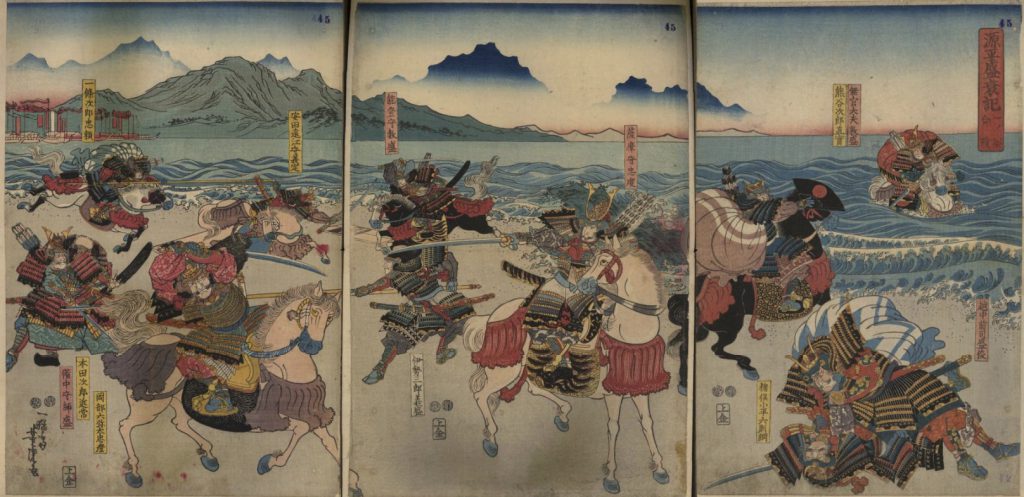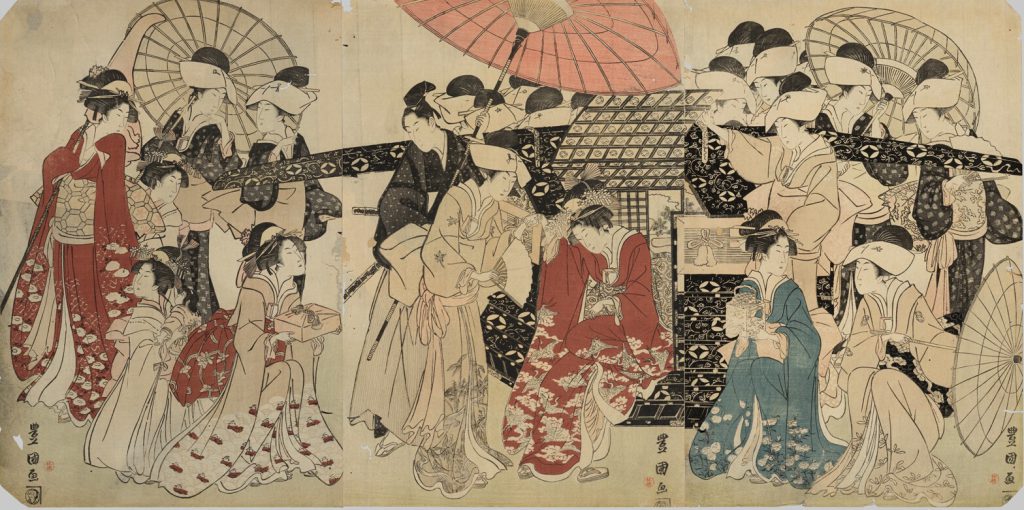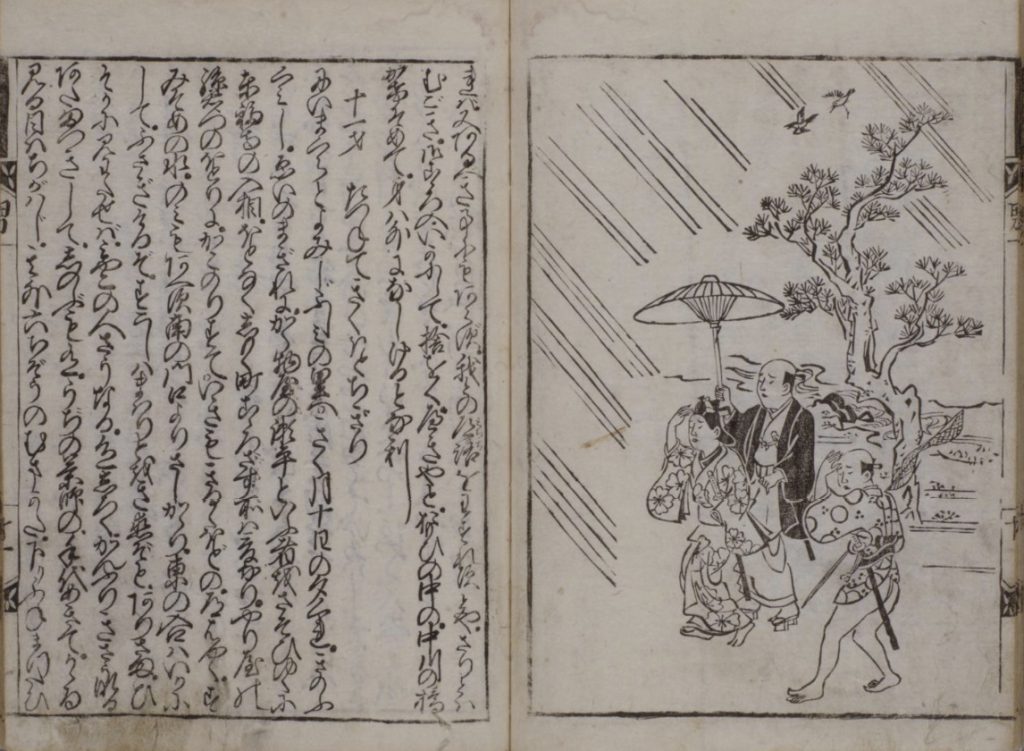The word “Ukiyo” has two opposite meanings
Ukiyo-e means paintings of the “floating world”.
In Japanese, the word “Ukiyo” originally has two meanings in the same pronunciation: 浮世 (Ukiyo; floating world) and 憂世(Ukiyo; sorrowful world).
Since it is difficult to understand, I put a number on these two: Ukiyo-1 means “floating world” and Ukiyo-2 means “sorrowful world”.
Ukiyo-1(浮世)means the world in which we live today. On the other hand, Ukiyo-2(憂世)means painful and sorrowful world.

Japanese medieval Samurai is described. Utagawa Yoshitora’Ichinotani Josuiki’ from “Dainihon Rekishi Nishikie”(大日本歴史錦絵)(19th century/NDL Digital Collections)
People realized this world is no longer Sorrowful
In medieval Japan before the Edo period, the world was full of difficulties and hardships for the majority of the people. They wished to go to the “other world” (あの世; the world after death) as soon as possible. For the people of that time, “Ukiyo” meant just a sorrowful world.
In 1615, Tokugawa Ieyasu defeated the Toyotomi clan in the Osaka Summer War to unify the country, and by the end of the 17th century and the beginning of the 18th century, the united Japan of Ieyasu became calm and stable. At this time, Japan’s national power grew explosively.
In particular, the economy of Edo (now Tokyo) expanded and infrastructure was rapidly developed as daimyos (feudal lords) from various countries were forced to live in Edo on a regular basis (known as the “Sankin Kotai” system). With the population growing at a rapid pace, the city became vibrant and gave birth to a variety of new cultures.
For example, common women began to enjoy dressing up by having their hair done up beautifully, wearing beautifully patterned kimonos, and putting on makeup. It was also during this period that everyone began to see plays and eat delicious food at street stalls and tea stores. In other words, the common people began to have more time to enjoy their lives.
In this way, people’s view of life also changed. People not only began to wish for the afterlife, but also to enjoy the present moment of their lives, to affirm their lives and live in an uplifting mood. In this way, the “sorrowful world” was transformed into the “joyful world” and people described their joyfulness as “floating”.

Utagawa Toyokuni I”A princess traveling with her attendants descends from a palanquin”(1796–1809/from The Art Institute of Chicago)
Explosion of cultures
Along with this change in people’s consciousness came a change in cultural phenomena. As people’s thirst for knowledge grew, printing and publishing also developed. While the aristocracy was familiar with classical literature, what became popular among the common people during this period were pamphlets called “kana zoshi,” which contained popular and entertaining content.
The kana-zoshi contained travelogues written in hiragana and other forms of writing. Although at first these pamphlets were mainly written, they gradually began to include illustrations (Japanese people’s love of pictures can be clearly seen in the fact that they created their own culture called “emakimono,” or picture scrolls).
The illustrations also began to depict the real society of the time and to reflect the trends of the times.

The original book of Ihara Saikaku’s “Koshoku Ichidai Otoko”(好色一代男)(1684/from NDL Digital Collections)
The birth of Ukiyo-e and its original meaning
Perhaps the decisive moment for the birth of ukiyoe came in 1682 with the publication of Ihara Saikaku’s novel “Koshoku Ichidai Otoko,” a story of a very erotic and eccentric man. This best-selling work was called “Ukiyo-zoshi,” which consists of a novel and illustrations.
So “Ukiyo-e” originally means “picture from Ukiyo-zoshi”.
Ukiyoe is a picture that represents the “Ukiyo” or the present world for the people of the time through prints and hand paintings.
Hishikawa Moronobu was in charge of illustrations for “Koshoku Ichidai Otoko” published in Edo at the time. He is also known for his masterpiece, “Beauty Looking Back(Mikaeri Bijinzu/見返り美人図)”.

Hishikawa Moronobu”Beauty Looking Back(Mikaeri Bijinzu/見返り美人図)”(17th century/from Colbase)

